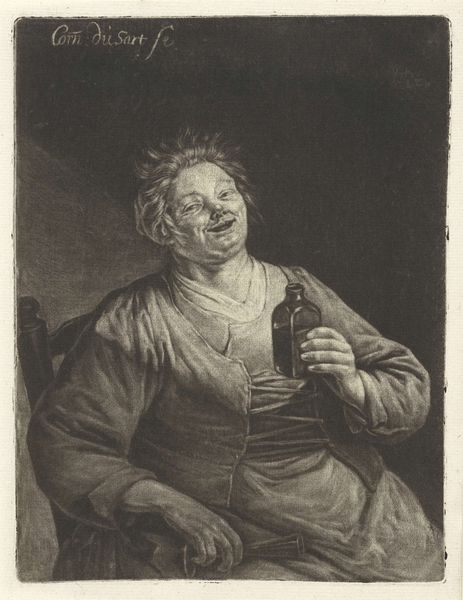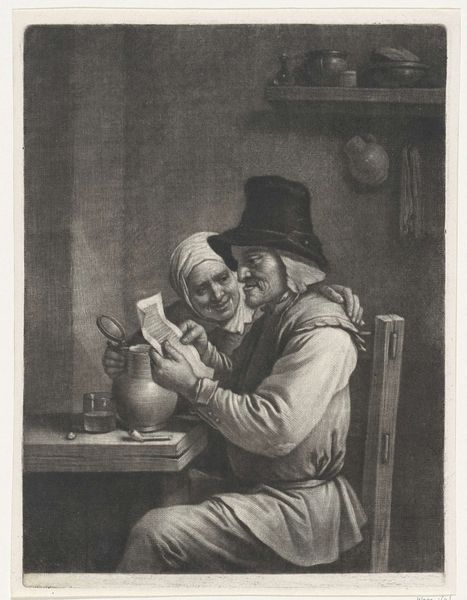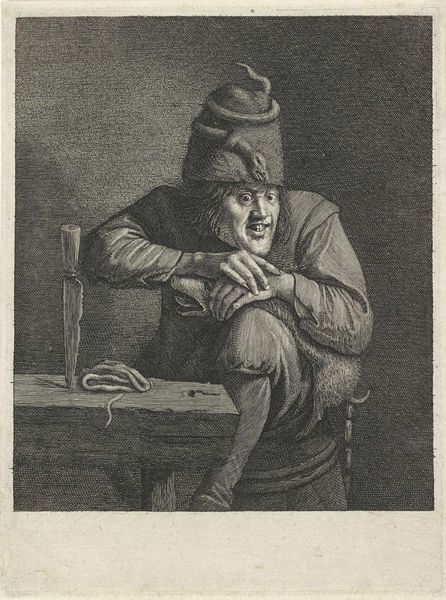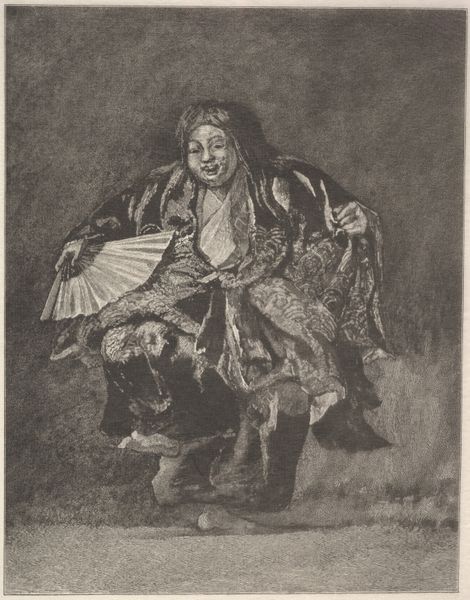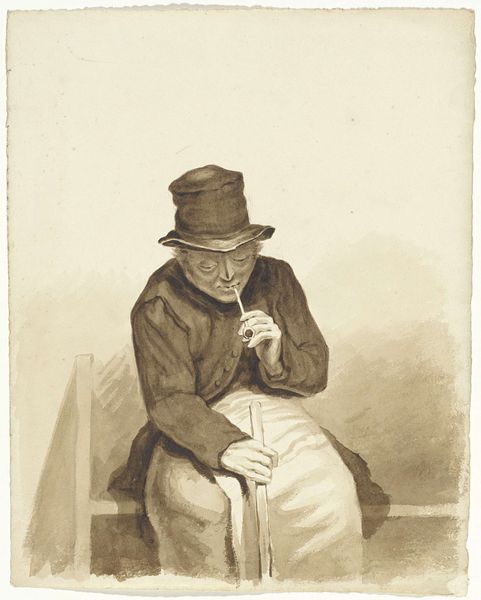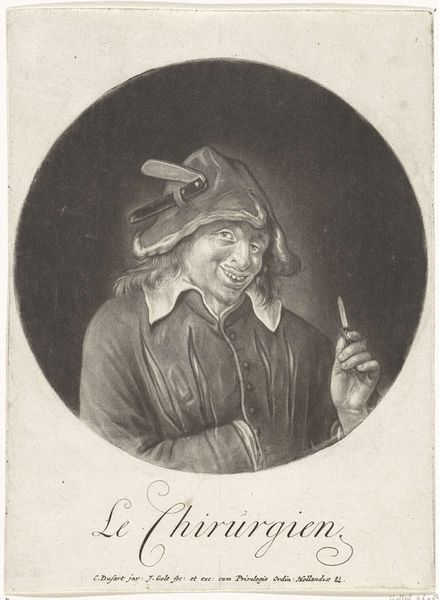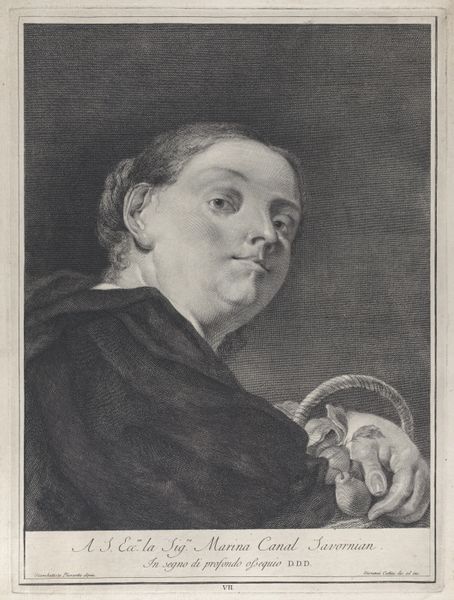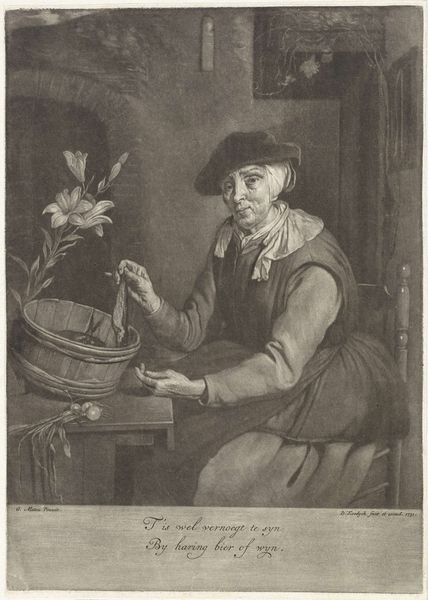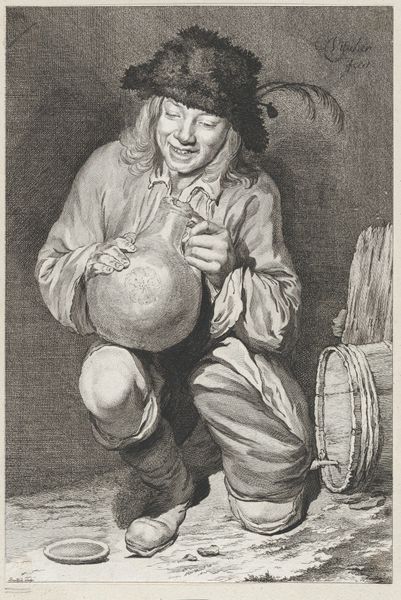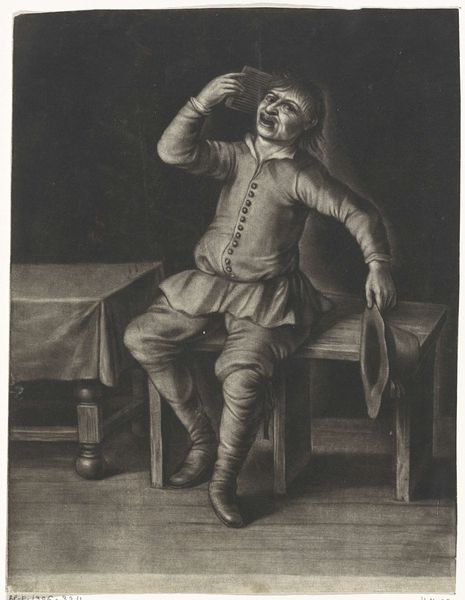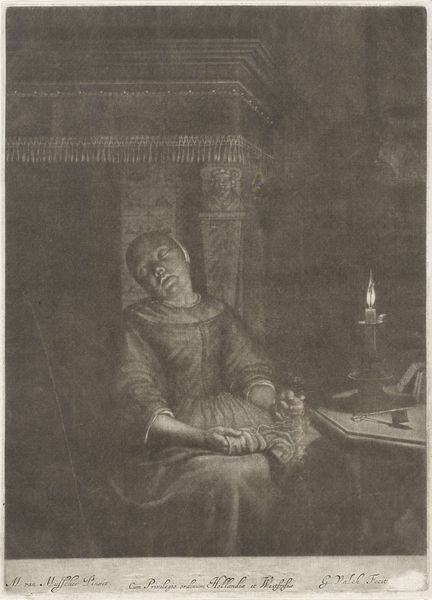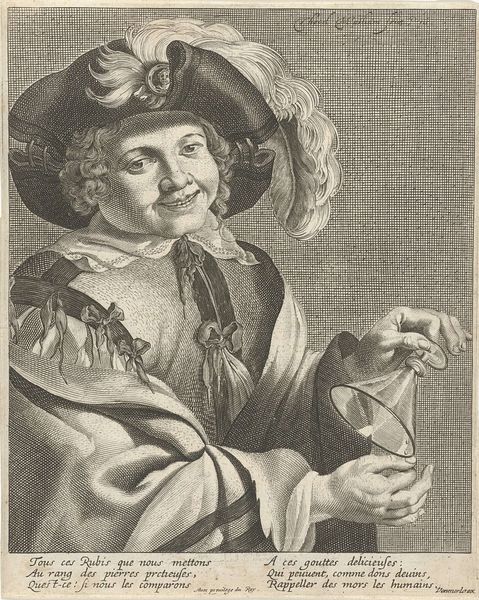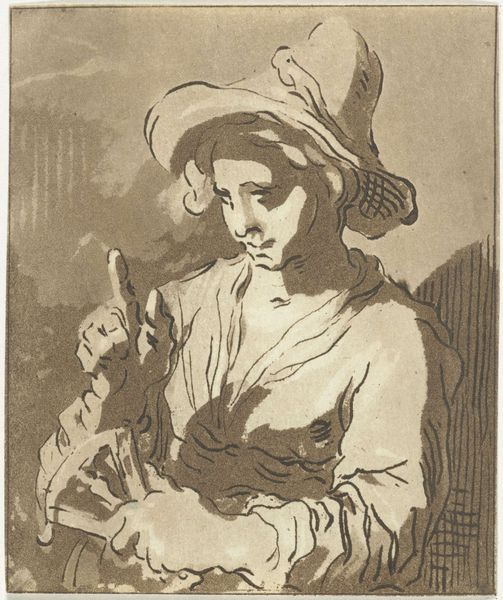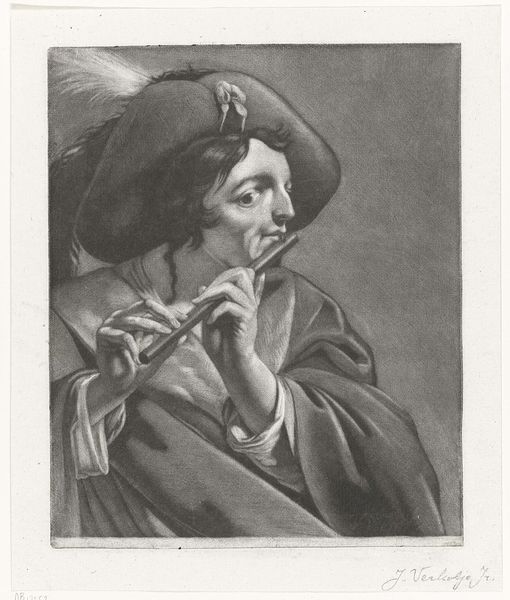
The Buffoon Calabacillas, mistakenly called The Idiot of Coria 1639
0:00
0:00
diegovelazquez
Museo del Prado, Madrid, Spain
painting, oil-paint
#
portrait
#
baroque
#
painting
#
oil-paint
#
figuration
#
genre-painting
#
history-painting
Dimensions: 83 x 106 cm
Copyright: Public domain
Editor: Here we have Diego Velázquez’s “The Buffoon Calabacillas, mistakenly called The Idiot of Coria,” painted in 1639 using oil. What strikes me most is the man's almost unsettling, yet captivating grin. What is your perspective on this piece? Curator: It's essential to consider the historical context. Court jesters and buffoons held a complex position in 17th-century European society. They were often marginalized due to physical or mental disabilities, yet simultaneously enjoyed a degree of privilege, using humor to critique power structures. What do you make of the objects that surround him, particularly those on the lower part of the canvas? Editor: They feel a bit out of place...almost like discarded toys? It feels mocking somehow, reducing him. Curator: Exactly! The objects might allude to notions of play and foolishness. Yet, by giving Calabacillas an individual identity and agency, Velázquez challenges the social hierarchy. The play of shadows and light, typical of Baroque painting, further emphasizes his human presence, resisting a one-dimensional representation of disability. In which ways would you suggest the work allows space for Calabacillas to communicate beyond the limits imposed on him by his historical circumstances? Editor: I see what you mean... the soft and subtle brushwork helps him look a bit more "real." It's like he has dignity. By inviting empathy, this painting pushes against the constraints imposed by societal bias. Curator: Precisely! And remember, the misconception about the title perpetuates a prejudiced narrative that is still present today. By critically reassessing our comprehension and perceptions, as suggested through a close analysis of the piece, art can become an instrument for social justice and initiate substantial conversations regarding intersectional issues and social transformation. Editor: It’s been illuminating to understand the role this portrait plays within a larger conversation about representation and challenging power.
Comments
No comments
Be the first to comment and join the conversation on the ultimate creative platform.
